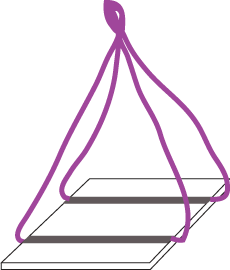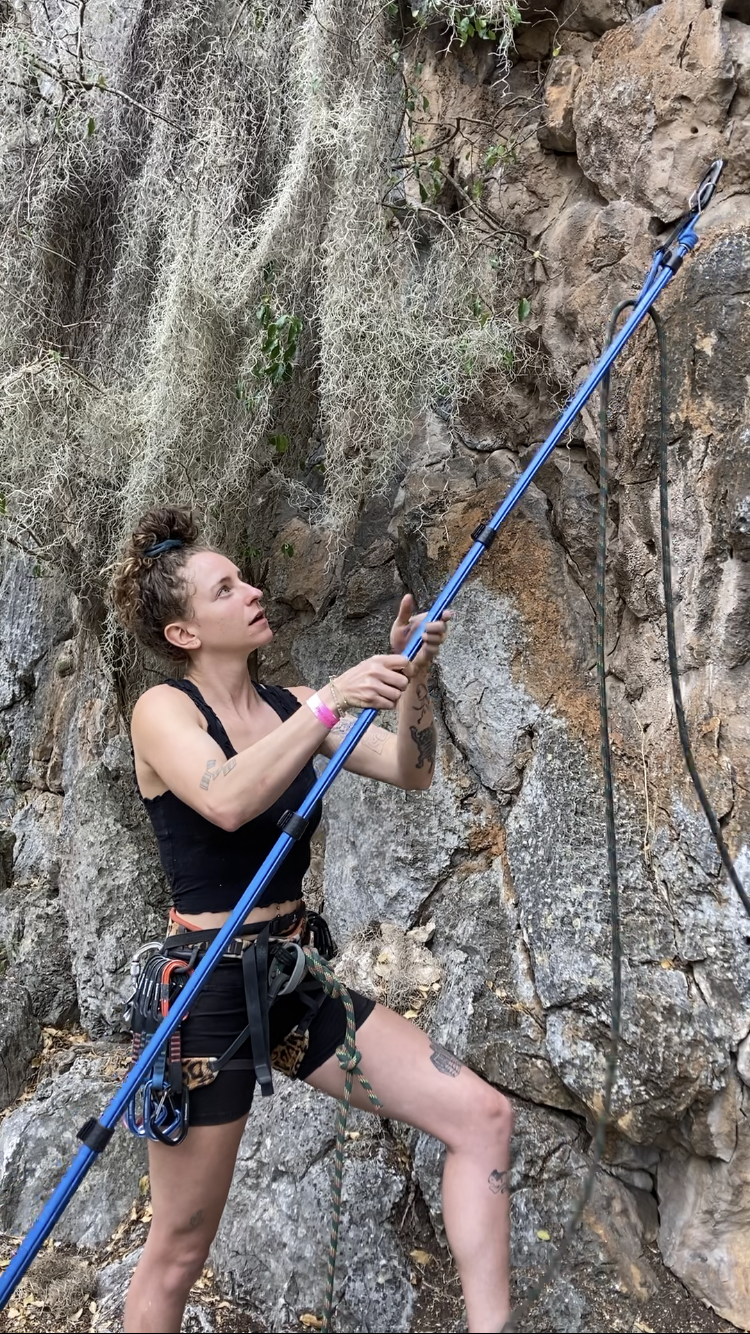Is it OK to Use a Grigri for Trad Climbing?
Last Updated on: 11th June 2023, 12:11 pm
Does it matter what kind of belay device you use when belaying a climber on a trad climb? Is it OK to use a Grigri for belaying trad climbs?
Need a Belay Device? Get one today.
Well, the general consensus in belaying theory is that it’s best to not use an auto-locking belay device like a Grigri when trad climbing. Why? Since Grigris and similar devices catch falls so fast and abruptly (that is, they allow a minimal amount of rope to pass through before arresting the fall), they put higher forces on the pieces of protection that catch the fall.
Here’s what REI says on its page about how to choose a belay device:
“Assisted-braking devices [like the Grigri] can put high shock loads on climbing protection during a fall. As a result, they are not recommended for lead trad climbing and are best suited for use with extremely secure top-rope anchors.”
This article on The Clymb says something similar:
“If they are used in a traditional climbing scenario, care must be taken to ensure that any gear placed is bomber, as these devices offer a purely static belay.”
That said, I couldn’t find anything in Petzl’s documentation that says that Grigris shouldn’t be used for trad belying. I think that’s telling. EDIT: What I have found is a Petzl PDF originally hosted by Urban Rock. Check out page 8 in particular. There Petzl tests the forces felt from a fall caught with a tube-style device (Petzl’s Reverso, in this case) and a Grigri. Here’s what Petzl says:
Slippage in the REVERSO 4 has the effect of limiting the forces at work. The difference between GRIGRI and REVERSO 4 can be significant: up to 30% less force on the anchor. The climber experiences a softer catch with the REVERSO 4 in these configurations. The impact on the belayer is reduced, the force is weaker due to rope slippage. However, control of the rope, and thus stopping the fall, remains dependent on the belayer being very alert.
And then
Advice: The belay device should be suited to the situation. Slippage in the REVERSO 4 increases climber displacement: one must be especially vigilant where there is a risk of hitting the ground or a ledge. This slippage can make stopping a fall particularly difficult for the belayer: gloves must be used, especially with a new skinny rope.
In practice, many people do use Grigris for belaying traditional climbs. I know many experienced climbers who trad belay with a Grigri, and I myself have done it many times. Read up, find professional instruction, and use your own experience to tell you what to do.
For what it’s worth, here’s a paragraph taken from this review of the Grigri 2 that includes the debunking of “myths” that have grown up around using the Grigri:
“Myth #2: The GriGri is too dangerous for trad climbing, because the camming device stops suddenly, creating a static brake. Admittedly, Petzl previously advertised the GriGri for use on UIAA certified bolted anchors only. This language is now absent, however, in the GriGri 2 instructions. When I spoke with the people at Petzl about this they told me, “A good anchor is a good anchor, period.” The fear of failure from a static load on a gear anchor, or top gear placement, from a GriGri 2, as opposed to the more dynamic braking of a tube device such as the ATC, is largely unfounded. Situations that demonstrate this failure are unique to contrived tests. Ultimately, a dynamic rope and attentive belayer are much more significant to this equation.”
To counter that, however, is this line from Geir Hundal, a very experienced guide and climber from Arizona :
“Use of a GriGri for traditional climbing makes it more likely that marginal placements / low rated pieces will fail.”
When I’m leading a trad climb, I usually don’t care what device my belayer uses. I just want him to use the belay device he is most used to and comfortable with. The only time I personally might prefer an ATC belay above a Grigri belay is if I were climbing a trad route that only took gear that was sketchy or insecure. In that case, I want the “catch” of the belay to be as light and forgiving as possible.
One other thing to consider is rock quality. Imagine this scenario: You’re leading a pitch on some sort of loose/friable/fractured rock. You’re halfway up the pitch, reach up and grab a grapefruit-sized hold that comes off after you’ve committed you’re weight to it. You’re falling and the rock hits your belayer in his [hopefully] helmeted head and knocks him out. If the belayer had a Grigri, your fall would most likely still be arrested by the device. With an ATC or other tube-style device, however, that likely wouldn’t be the case, since your unconscious belayer would no longer have his hand on the brake side of the rope.
Further reading
Here are some forum threads that address the issue.
- Who uses a grigri to belay trad leaders? on Mountain Project
- grigri for belaying trad?? i know the answer is around on RockClimbing.com
- Belaying a Trad leader with a Grigri at QueenslandClimbing.yuku.com
- trad + grigri at Chockstone
- Using Gri Gri for trad and grigri for Trad. at UK Climbing



Not sure how old this article is but the best trad belaying device is Gregory, my climbing partner. Id say ATC all the way though, so much more control. Grigri is designed for me when belaying my wife on top rope.
Chow!
Thanks for a thoroughly researched article on an interesting topic! Lots of valid points on both sides. Glad to have found this.
Outstanding, thanks for the detailed history. I’m just getting back into climbing after 22yrs and I was watching Grigri use on trad and asked when that changed over. I knew I had read t in the lit at some point and was more curios as to when things changed.. now I know!
Keep up the good work!